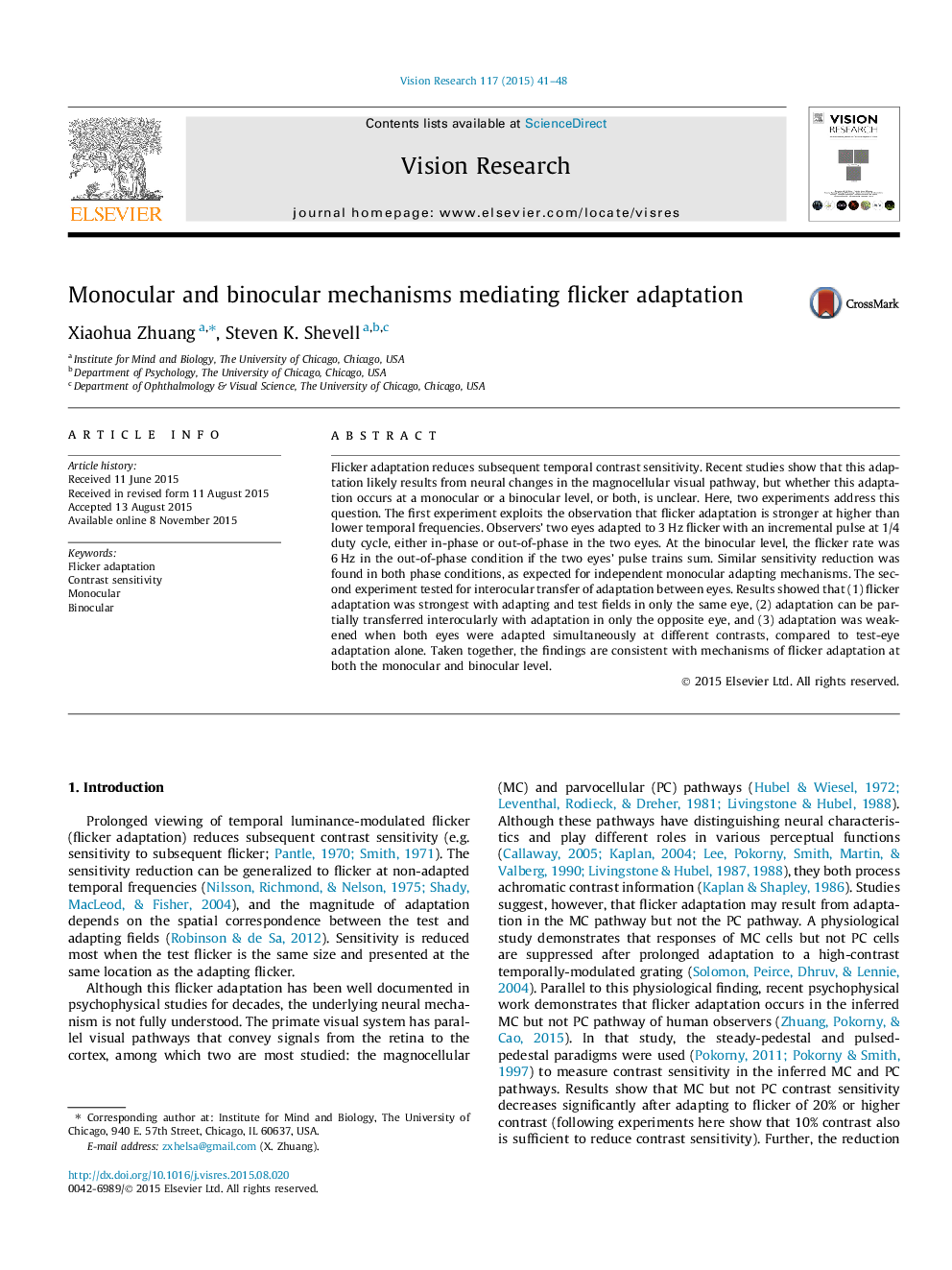| کد مقاله | کد نشریه | سال انتشار | مقاله انگلیسی | نسخه تمام متن |
|---|---|---|---|---|
| 6203066 | 1603182 | 2015 | 8 صفحه PDF | دانلود رایگان |
- Flicker adaptation in inferred magnocellular pathway reveals interocular transfer.
- Flicker adaptation in one eye is weakened by stronger flicker in the other eye.
- Flicker adaptation occurs at both the monocular and binocular levels.
Flicker adaptation reduces subsequent temporal contrast sensitivity. Recent studies show that this adaptation likely results from neural changes in the magnocellular visual pathway, but whether this adaptation occurs at a monocular or a binocular level, or both, is unclear. Here, two experiments address this question. The first experiment exploits the observation that flicker adaptation is stronger at higher than lower temporal frequencies. Observers' two eyes adapted to 3Â Hz flicker with an incremental pulse at 1/4 duty cycle, either in-phase or out-of-phase in the two eyes. At the binocular level, the flicker rate was 6Â Hz in the out-of-phase condition if the two eyes' pulse trains sum. Similar sensitivity reduction was found in both phase conditions, as expected for independent monocular adapting mechanisms. The second experiment tested for interocular transfer of adaptation between eyes. Results showed that (1) flicker adaptation was strongest with adapting and test fields in only the same eye, (2) adaptation can be partially transferred interocularly with adaptation in only the opposite eye, and (3) adaptation was weakened when both eyes were adapted simultaneously at different contrasts, compared to test-eye adaptation alone. Taken together, the findings are consistent with mechanisms of flicker adaptation at both the monocular and binocular level.
Journal: Vision Research - Volume 117, December 2015, Pages 41-48
